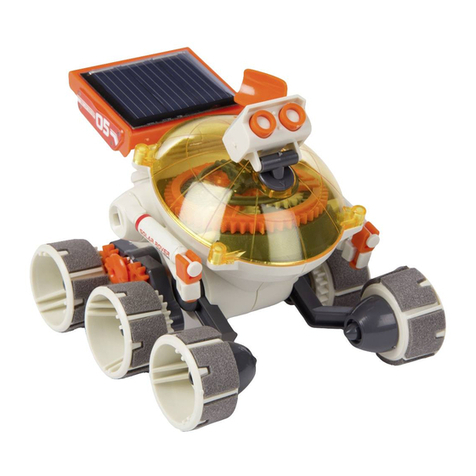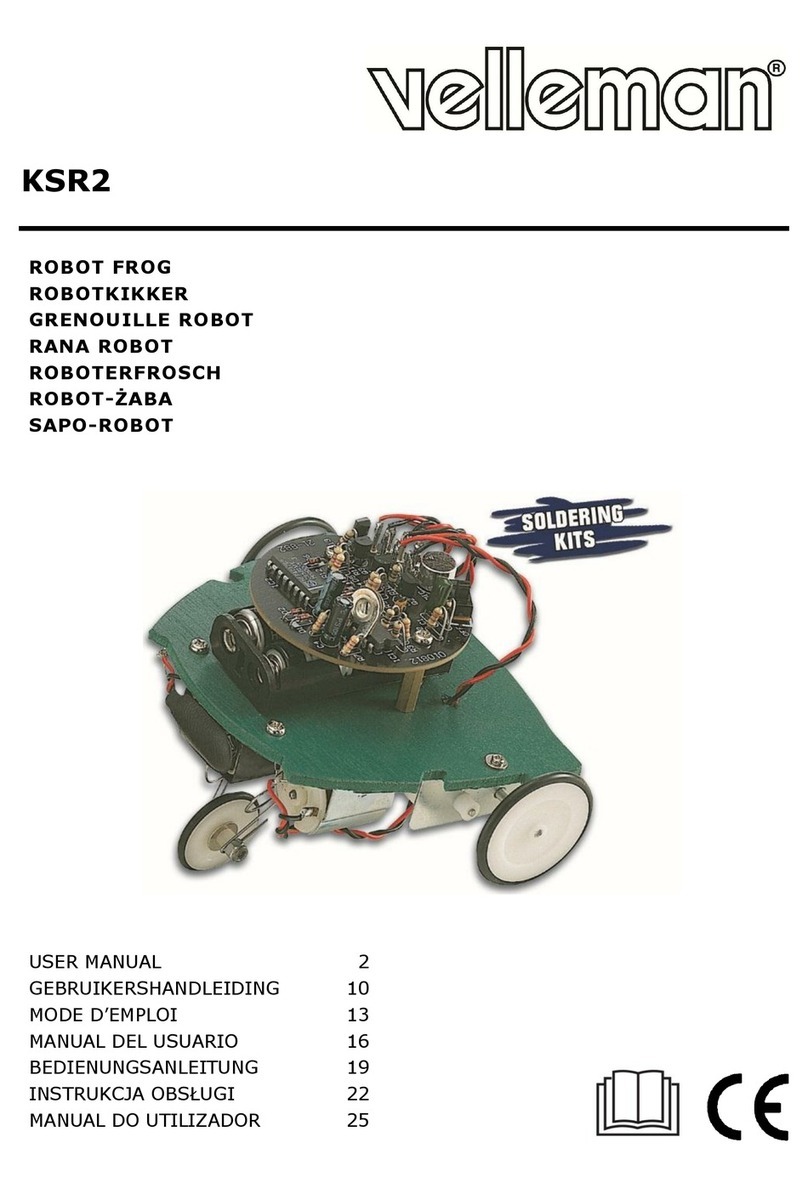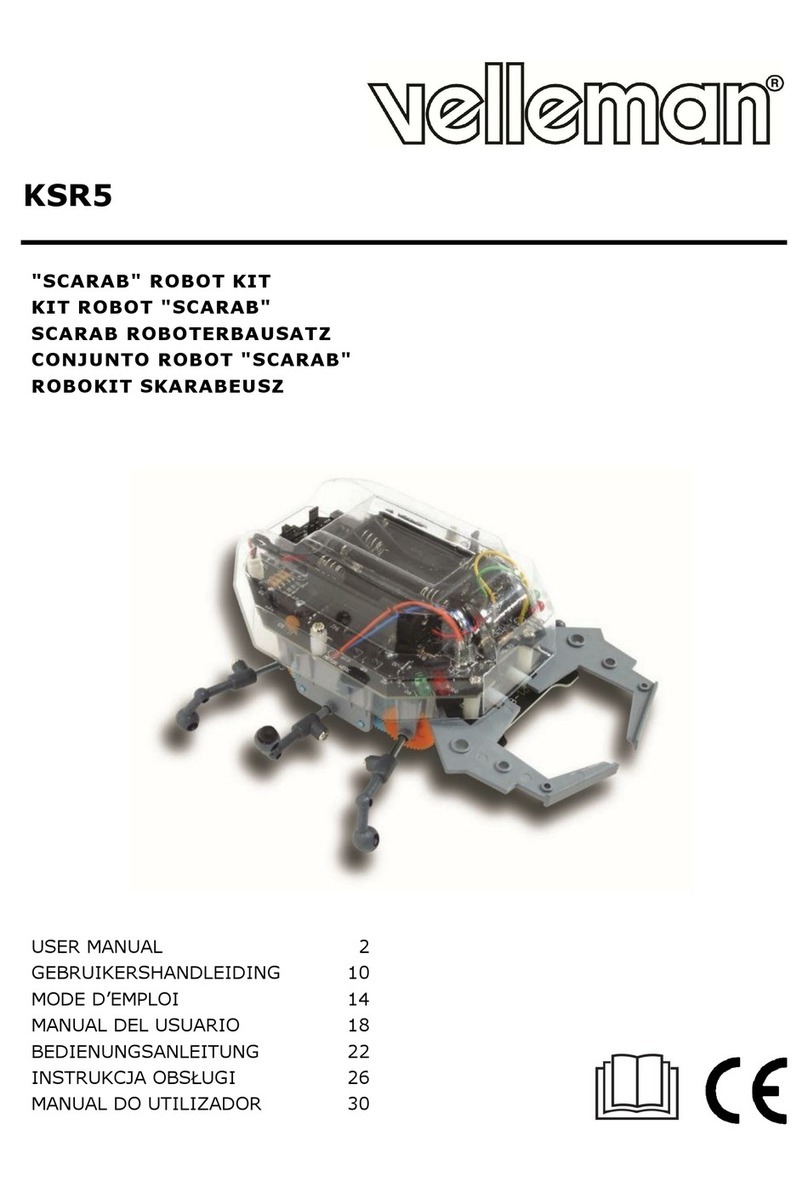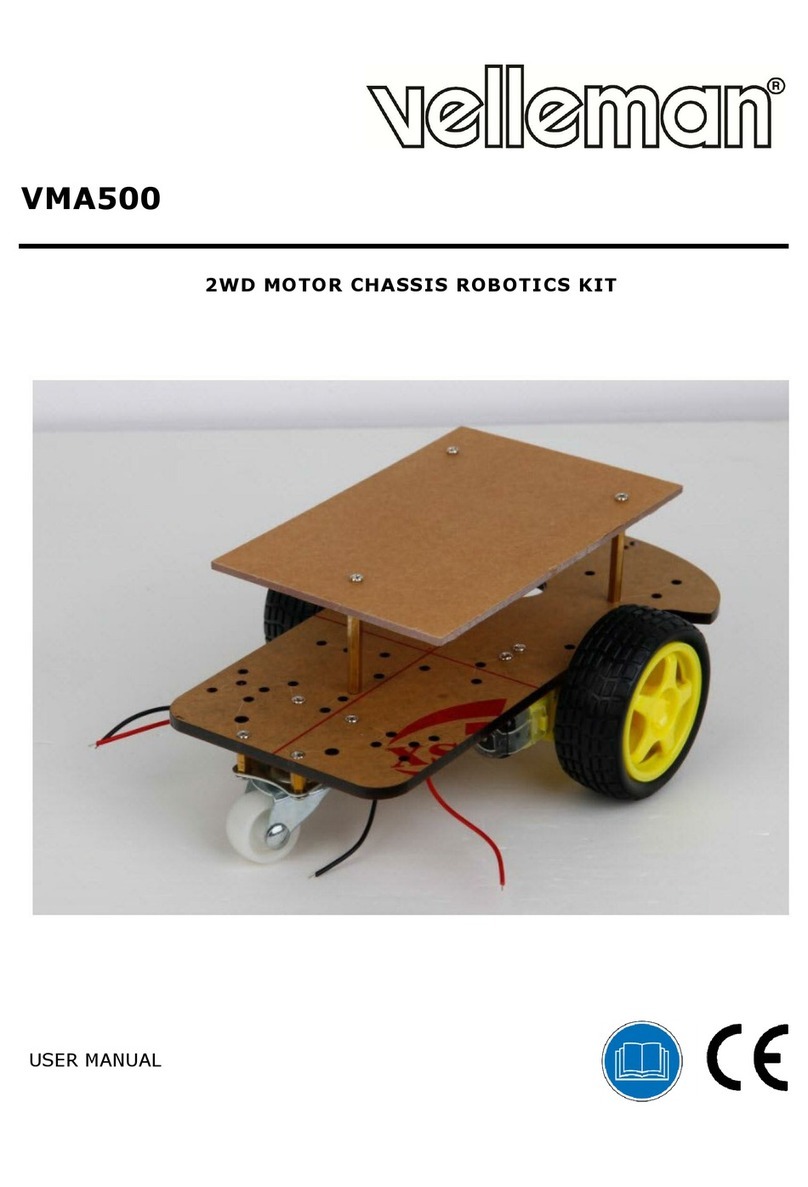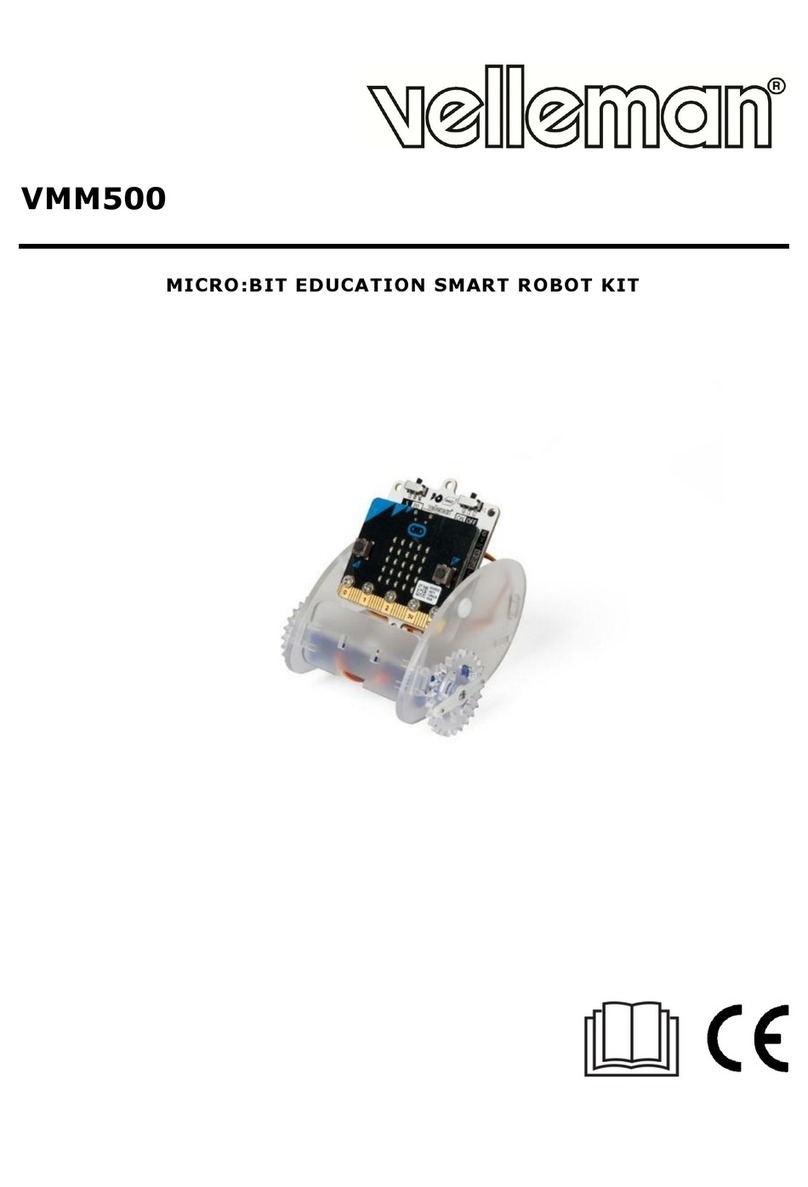KSR6
V. 02 –09/02/2018 2 ©Velleman nv
USER MANUAL
1. Introduction
To all residents of the European Union
Important environmental information about this product
This symbol on the device or the package indicates that disposal of the device after its lifecycle could
harm the environment. Do not dispose of the unit (or batteries) as unsorted municipal waste; it
should be taken to a specialized company for recycling. This device should be returned to your
distributor or to a local recycling service. Respect the local environmental rules.
If in doubt, contact your local waste disposal authorities.
Thank you for choosing Velleman! Please read the manual thoroughly before bringing this device into service. If
the device was damaged in transit, do not install or use it and contact your dealer.
The KSR6 uses infrared emitting diodes as "eyes" to avoid obstacles in its path. The Ladybug automatically
makes a left turn when it detects an object. It continues to move forward as long as there's no detection.
The Kit comes complete with 2 sets of differently designed legs, which move in their own distinct way. Fun and
excitement are guaranteed.
The KSR6 requires four 1.5VDC AAA-batteries (not included).
Apart from the batteries, you will also need a pair of long-nose pliers, a soldering iron, a diagonal cutter, a
screwdriver, a soldering iron and a length of solder wire.
2. General Guidelines
Refer to the Velleman® Service and Quality Warranty on the last pages of this manual.
3. Electronic Parts List
1. resistor: 1x 10Ω (brown/black/black/gold)
2x 15Ω (brown/green/black/gold)
2x 100Ω (brown/black/brown/gold)
1x 1K (brown/black/red/gold)
4x 4K7 (yellow/purple/red/gold)
3x 10K (brown/black/orange/gold)
3x 120K (brown/red/yellow/gold)
1x 1.8M (brown/grey/green/gold)
2. ceramic capacitor: 1x type 331,
4x type 104
3. electrolytic capacitor: 1x 4.7μf, 2x 100μf
4. IR emitting diode 5mm, clear (1x)
5. photo transistor, black (1x)
6. black tube (1x)
7. diode 1N4148 (1x)
8. pin header 4 pins (1x)
9. female pin header 4 pins (1x)
10. transistor: 3x C945, 1x A733, 2x 8050,
2x 8550
11. LED holder (2x)
12. IC: 1x type LM324 (14 pins)
13. IC socket 14 pins (1x)
14. battery connector (1x)
15. pin (4x)
16. variable resistor 50K (1x)
17. slide switch (1x)
18. connector with wire: 1 x yellow, 1 x green,
1 x orange, 1 x blue
19. battery holder (1x)
20. PCB (1x)

